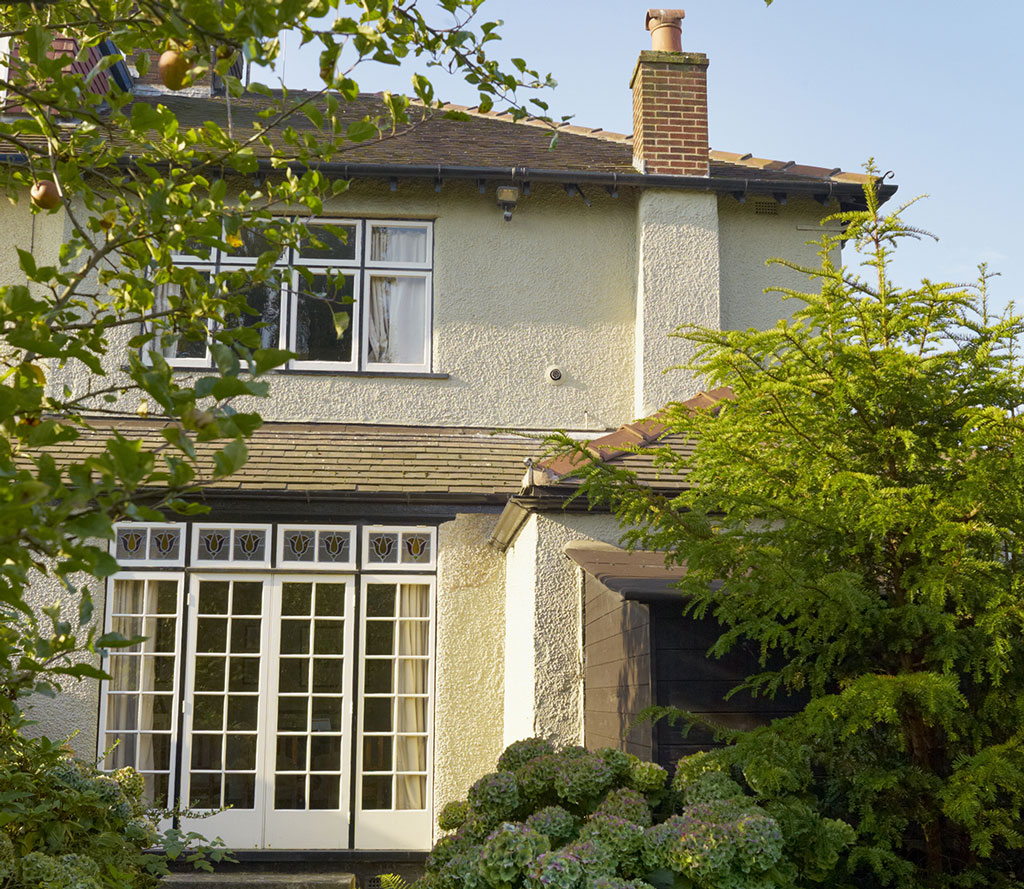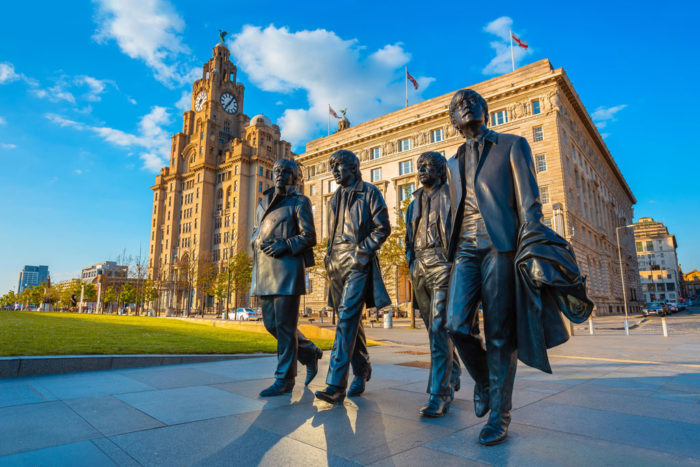A Beatles tour of Liverpool
David Atkinson visits Liverpool for a magical history tour of the band’s legacy
It looks like an ordinary wall sign. Rusted and weather beaten, the words “Casbah Coffee Club” are clearly visible next to the Coca-Cola trademark. But it’s no ordinary sign for Roag Best, a man whose life story is permanently entwined with the story of The Beatles. “I rescued this sign off a skip and put it on my bedroom wall at the age of 12,” says the fast-talking director of the Magical Beatles Museum on Liverpool’s Mathew Street. “Today, it’s the exhibit I would risk my life to rescue from a fire because it’s the key to the early story of The Beatles and how my mother become known as the mother of the Merseybeat movement.”
Roag’s mother, Mona, founded the Casbah Coffee Club as the city’s first rock’n’roll café in a Liverpool suburb and The Quarrymen, a skiffle band featuring a young John Lennon, Paul McCartney and George Harrison, played the opening night on 29 August 1959. “The Casbah was the place where all that started,” said McCartney. “We looked upon it as our personal club.”
When the band evolved into the Silver Beatles in 1960, Roag’s brother, Pete Best, became the band’s first drummer. He toured with them, making the first trip to Hamburg and recording at Abbey Road, until Ringo Starr replaced him in 1962 in time for debut single Love Me Do to enter the UK chart. “I feel very protective of our family story as part of the Beatles’ legacy,” says Roag, who had amassed a 30-year collection of authentic Beatles memorabilia before opening the museum last summer. “We lived through the whole journey from humble beginnings to the top of the world,” he adds.
Abbey Road
The Fab Four’s home city of Liverpool is the perfect place to explore the legacy of the world’s most famous band. It’s a pilgrimage many Beatles fans made in 2019 to celebrate the 50-year anniversary of the album Abbey Road, the recording sessions for which were the last in which all four members participated (Let It Be was the final studio album released in 1970, but it had been largely recorded before the Abbey Road sessions began). The front cover image of Abbey Road, taken in August 1969 on the zebra crossing near the entrance to the London recording studios, has become one of the most copied images in popular culture. A new mural by artist Paul Curtis on Liverpool’s Grafton Street is currently the city’s favourite photo opportunity.
The impact of the Beatles legacy is estimated to have generated £82 million for the city’s economy and created nearly 2,500 jobs, according to a 2016 report by the University of Liverpool. But, away from the tour groups and themed bars of the bustling Cavern Quarter, some of the other places associated with The Beatles reveal more of the personal stories of the four young lads from Liverpool behind the hysterical headlines and fainting fans.

Woolton
Some four miles from the city centre sits the leafy south Liverpool suburb of Woolton. It is here that the modest childhood homes of Lennon and McCartney, now managed by the National Trust and restored as if in their 1950s heyday, are located. The guided tours of both ‘Mendips’, Lennon’s home at 251 Menlove Avenue from the age of 5 until the band’s 1963 breakthrough, and 20 Forthlin Road, McCartney’s home for almost a decade, highlight stories from their teenage years, such as the way they rehearsed in John’s porch, and visit the bedroom where they first wrote Please Please Me.
Strawberry Field
Just around the corner from Mendips is the latest Beatles-related site to, quite literally, open its gates to visitors. Strawberry Field, the former Salvation Army children’s home made famous by the 1967 song Strawberry Fields Forever, re-opened in summer 2019 with a new exhibition centre about Lennon’s early life and a garden using his lyrics to inspire quiet contemplation, plus an adult-learning centre for vulnerable young people. The site first opened in 1936 and the young John would often play in the gardens while living at Mendips with his aunt Mimi. The famous red, wrought-iron gates of the original entrance were returned to the site for the re-opening.

“Working here has given me an insight into the sadness and challenges that John faced as a child after he was taken away from his mother to live with his aunt, and how he rose above them,” says Major Kathy Versfeld of the Salvation Army on our tour of the site. “This was a place for him to think and dream Strawberry Fields Forever. I hope now it will become a place for new generations to create their own new world order.” Or, as Lennon himself said in the song’s lyrics, a place where, “Nothing is real and nothing to get hung about.”
Mathew Street
The tranquillity of suburban Liverpool contrasts starkly with the Cavern Quarter, where Mathew Street is today home to Beatles-themed bars and souvenir shops, while the Hard Days Night Hotel sits around the corner with its McCartney and Lennon Suites, the latter coming complete with a white baby grand piano.
The reason for Mathew Street’s popularity is The Cavern, the cellar-like music venue where The Beatles played their first gig at a lunchtime session on 9 February 1961. Originally opened as a jazz club, The Cavern would go on to host the band 292 times over the next two and a half years. The venue as it exists today is adapted from the original cellar but retains its trademark low, subterranean ceiling with live music every day, with McCartney himself having played there in July 2018.
The Beatles Story museum
From The Cavern, it is a short stroll across town towards Liverpool’s UNESCO-listed waterfront, where The Beatles Story museum is located in the Royal Albert Dock near to the Tate Liverpool art gallery. The museum recreates key scenes from the band’s story, including the Abbey Road recording sessions and the 1968 visit to India that lead to the collaboration with Ravi Shankar.

Museum of Liverpool
An ongoing exhibition at the Museum of Liverpool in 2019 offered the greatest insight into one of the most notorious, and often misunderstood, elements of Beatles history: the relationship between Lennon and the artist Yoko Ono. The display told the story of the couple’s personal and creative relationship through quotes, lyrics, artworks, music, films and more.
The couple first met in November 1966 at Yoko’s exhibition at the Indica Gallery in London and went on to marry in March 1969. They staged their first of their infamous bed-ins for peace at the Hilton Hotel, Amsterdam, five days later, the events captured in the lyrics of the song The Ballad of John and Yoko:
Drove from Paris to the Amsterdam Hilton
Talking in our beds for a week
The newspapers said
‘Say what’re you doing in bed?’
I said we’re only trying to get us some peace.
“Everyone thinks they know the story of the John and Yoko, but we wanted to go deeper and turn some of the preconceptions on their head,” says Karen O’Rourke, exhibition curator at Liverpool Museums. In a particularly powerful piece of BBC TV footage from 1971, John describes to British TV interviewer Michael Parkinson his hurt at the public reaction to his relationship with Yoko. “I’ve fallen in love with Yoko’s work and campaigning,” says O’Rourke. “She was a massive influence on him with her ideas about direct protest and she blazed a trail for so many contemporary ideas around tolerance and equality.”
Lennon was shot dead in New York on 8 December 1980, unleashing a public outpouring of grief on both sides of the Atlantic. But the legacy lives on. “The story on John and Yoko doesn’t end in 1980,” says O’Rourke. “Their message of peace and understanding is still relevant today.”
“For me,” she adds, “their story is now.”




